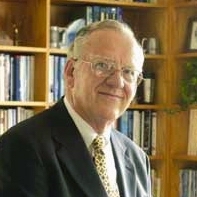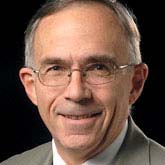Uncommon Characters

Following ten years of teaching and writing in water resource and production economics, I was fortunate to be recruited as professor and head of Montana State University’s combined department of agricultural economics and economics. Upon arrival in 1979, I discovered, as anticipated, a dozen or so very good agricultural economists. I also found a small cadre of excellent young general economists-three of whom were also affiliated with PERC.
The reason, I believe, that PERC has had such a profound impact on the evolution of thought in environmental economics has to do with three common characteristics of three uncommon characters. Rick Stroup, Terry Anderson, and P. J. Hill share a passion and knack for clear, rigorous thought; all three are exceptional communicators; and all three have genuinely friendly, forthcoming, and compassionate personalities.
What Rick, Terry, P. J., and their colleagues at PERC have done for me is to fill in the missing pieces of Castle’s challenging puzzle. And it is reassuring to know that persistence, good ideas, intellect, and the quality of the messenger do make a difference.
Bruce R. Beattie Professor of Agricultural and Resource Economics University of Arizona
Dedicated Academics
In 1999, I was given the opportunity to spend a summer at PERC working as a fellow in the program headed by Daniel Benjamin. In my three months in Bozeman, I finally experienced what I thought graduate school would be all about: dedicated academics who took the time to read my work carefully and give me extremely detailed and useful advice, lively seminars on a wide range of relevant topics on environmental policy, and lots of informal but high-caliber discussions on everything from current political events to the art of getting published.
Perhaps the thing I always found most refreshing about PERC is the widespread belief held by its members that private individuals are just as smart and resourceful as academic experts, policy makers, and bureaucratic planners in developing original solutions to environmental problems if they are given the appropriate incentives. This may be common sense to most people, I guess, but it is so rare in academic circles. Keep up the good work, PERCies; you’ve set the standard I try to live up to!
Pierre Desrochers Post-Doctoral Fellow Whiting School of Engineering Johns Hopkins University
Squaring a Circle
Reared in a rural Minnesota family whose adults were devoted to Democratic Farm Labor party policies, I was not a likely candidate to appreciate and apply the ideas generated at PERC. My Sierra Club volunteer commitments in the 1970s were directed, largely, to securing more congressionally designated wilderness lands from the domain of federal natural resource holdings. But my education in wildlife management and ecology helped me understand that careful intervention would often be required to sustain the biologic qualities for which wilderness was being set aside. While trying “to square that circle,” I came across the concept of wilderness trusts run by zealots for wilderness, a concept created by Rick Stroup and others, and a concept that I scrutinized and came to believe had merit.
A “circle that I could not square” at that time was the notion of privatization of government conservation lands. Terry Anderson’s articles and presentations on the potential of privatization kept me in a state of high anxiety. I was not prepared to give up any of those conservation assets which had been secured. Where would we hike? How could we camp easily and free? Why should we be fenced out?
Shortly after grimacing my way through a privatization discussion with Terry Anderson, I walked towards the northwest, into the wind and home from the campus. Large snowflakes landed on my glasses. I let them melt and smear. While peeking around those clouded lenses to cross a busy street, the thought of privatizing parts of the Library of Congress and selling off books struck me.
First, it seemed a terrible idea, yet something of which Anderson and his colleagues might approve. Then, nearly instantaneously, it seemed a great opportunity to unload a large number of bad books (Valley of the Dolls came to mind) now housed at the taxpayers’ expense, an action I would applaud.
Two decades after those snowflakes landed, melted and began to flow through ground, streams, and rivers towards Louisiana, my vision is still partially obstructed, but I am making my way to understand, select, and apply PERC-generated ideas. Fortunately for those of us who have the privilege of owning or managing rights in land protected by a deed in the courthouse, we can proceed with confidence and care to measure, manage, and monitor our soil, waters, wildlife, and wildflowers.
Brent Haglund, conservationist Madison, WI
Hooked on FME
I had never heard of PERC or free market environmentalism until I began teaching environmental and resource economics in 1994 and a colleague suggested I might like to read Free Market Environmentalism. I did, and I was hooked. Free market environmentalism (FME) has become an indispensable component of my undergraduate courses. I also use articles from PERC Reports, the Policy Series, and other PERC publications on a regular basis in courses ranging from the introductory level to the graduate level.
PERC and FME have profoundly impacted my thinking about environmental issues. Rather than focusing on areas of “market failure” and how governmental policy can be designed to “correct” the failure, I now think about the costs of government solutions and unintended side effects (e.g., the potential of increased mosquito-borne illness resulting from a ban on aerial spraying of pesticides). I have gained a tremendous amount of respect for personal property rights and most enjoy PERC stories about private conservation efforts that show that the market doesn’t always fail the environment.
Molly Espey Department of Agricultural and Applied Economics Clemson University
Small Team, Top Players
When the Heritage Foundation went looking for a partner to help craft the conservative vision for smart growth issues, PERC was an easy first choice. We were delighted when Terry Anderson accepted our offer, and it was a real joy to work with Jane Shaw, Richard Stroup, and Donald Leal to develop an alternative in a field that has been largely dominated by the left. As the nation’s top free market environmental think tank, PERC brought widely acknowledged expertise to the effort and is one of the chief reasons why the first major product of the collaboration-a book titled A Guide to Smart Growth: Shattering Myths, Providing Solutions-has been such a success.
In the battle for freedom and liberty, PERC may field a small team, but their players are top in their positions. As a result, PERC’s impact on the terms and outcome of many of our nation’s most pressing environmental debates, and the scores of innovations they have brought to the field, are vastly in excess of their size.
Ronald D. Utt Senior Research Fellow Heritage Foundation
Front and Center
Thinking about PERC’s twentieth birthday, my mind returns to the way things were in 1980. Command and control rode supreme across the land. It was a time when politicians installed wage and price controls in an effort to control inflation, market forces were viewed as the cause of environmental degradation, and an explosive growth of federal regulations dealt with workplace safety, consumer protection, housing, auto safety, and urban problems.
Even then, things were changing slightly on the environmental front. A few crude experiments with market-like instruments were under discussion. The 1980 Economic Report of the President briefly discussed EPA’s newly announced offset and bubble policies, which allowed highly regulated trading of air emissions. The report included this statement:
Regulation has joined taxation, and the provision of defense and social services as one of the principal activities of government. . . Although some regulation can be largely or wholly eliminated, most of the government’s regulatory activities are here to stay. (p. 127)
Now, twenty years and thousands of words later on the use of markets and property rights for environmental protection, the 2000 Economic Report of the President has this to say:
The challenge in addressing environmental problems lies in harnessing and channeling the power of markets, so that they both deliver continued economic growth and foster sound environmental practices. (p. 239)
There follows an extensive discussion of marketable permits, individual transferable quotas for fisheries, and the prospects for more environmental quality at lower cost. This sounds like something from PERC Reports!
Have the relative merits of free market environmentalism finally taken the day in Washington? Hardly. But these ideas are now front and center in the debate. When it comes to environmental quality, markets, property rights, and liberty are no longer relegated to the nether world of Washington policy makers.
Bruce Yandle Professor of Economics Emeritus Clemson University and PERC Senior Associate




